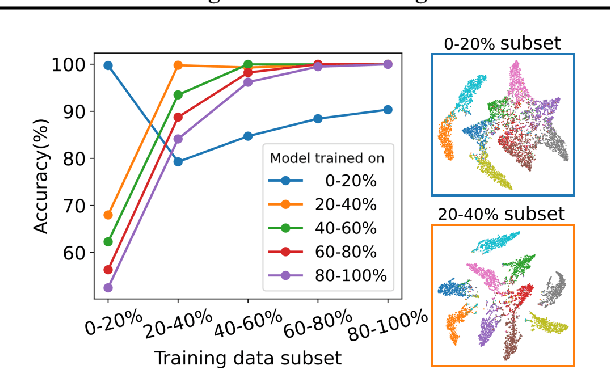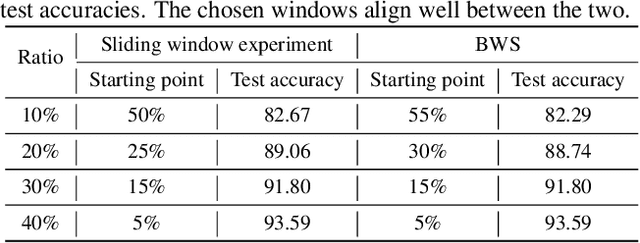Hoyong Choi
BWS: Best Window Selection Based on Sample Scores for Data Pruning across Broad Ranges
Jun 05, 2024



Abstract:Data subset selection aims to find a smaller yet informative subset of a large dataset that can approximate the full-dataset training, addressing challenges associated with training neural networks on large-scale datasets. However, existing methods tend to specialize in either high or low selection ratio regimes, lacking a universal approach that consistently achieves competitive performance across a broad range of selection ratios. We introduce a universal and efficient data subset selection method, Best Window Selection (BWS), by proposing a method to choose the best window subset from samples ordered based on their difficulty scores. This approach offers flexibility by allowing the choice of window intervals that span from easy to difficult samples. Furthermore, we provide an efficient mechanism for selecting the best window subset by evaluating its quality using kernel ridge regression. Our experimental results demonstrate the superior performance of BWS compared to other baselines across a broad range of selection ratios over datasets, including CIFAR-10/100 and ImageNet, and the scenarios involving training from random initialization or fine-tuning of pre-trained models.
Data Valuation Without Training of a Model
Jan 03, 2023Abstract:Many recent works on understanding deep learning try to quantify how much individual data instances influence the optimization and generalization of a model, either by analyzing the behavior of the model during training or by measuring the performance gap of the model when the instance is removed from the dataset. Such approaches reveal characteristics and importance of individual instances, which may provide useful information in diagnosing and improving deep learning. However, most of the existing works on data valuation require actual training of a model, which often demands high-computational cost. In this paper, we provide a training-free data valuation score, called complexity-gap score, which is a data-centric score to quantify the influence of individual instances in generalization of two-layer overparameterized neural networks. The proposed score can quantify irregularity of the instances and measure how much each data instance contributes in the total movement of the network parameters during training. We theoretically analyze and empirically demonstrate the effectiveness of the complexity-gap score in finding 'irregular or mislabeled' data instances, and also provide applications of the score in analyzing datasets and diagnosing training dynamics.
 Add to Chrome
Add to Chrome Add to Firefox
Add to Firefox Add to Edge
Add to Edge